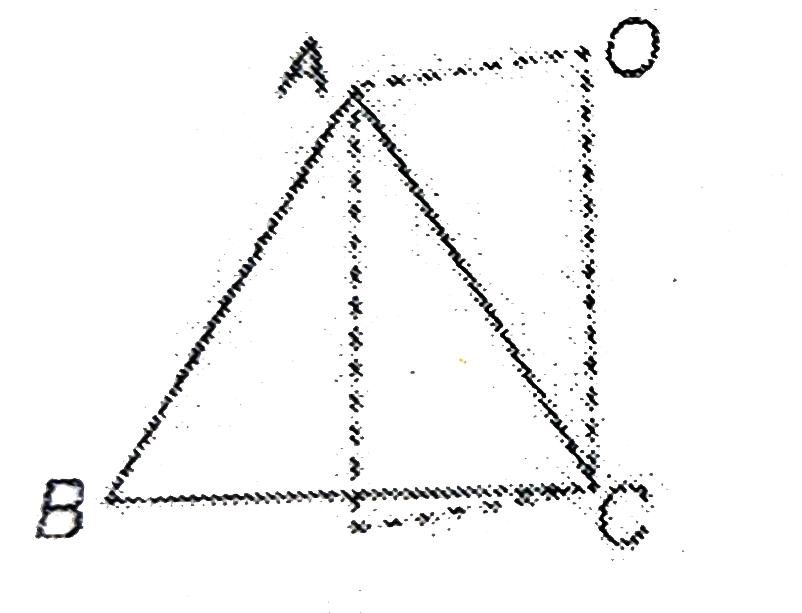The scalar →A.[(→B+→C)×(→A+→B+→C)] equals Solution in Tamil
0
[→A→B→C]+[→B→C→A]
[→A→B→C]
None of the above
The correct Answer is:A
→A. {(→B+→C)×→A+→B+→C)}
[∵ it is a scalar triple product of three vectors of the form →A,→B+→C,→A+→B+→C] ,

=→A. (→B×→A+→B×→B
+→B×→C+→C×→A+→C×→B+→C×→C)
=→A.(→B×→A)+→A.(→B×→C)+→A.(→C×→B)
=[→A→B→A]−[→A→B→C]=0
Similar Questions
If →a,→b,→c are non-coplanar unit vectors such that
→a×(→b×→c)=(→b+→c)√2, then the angle between →a and →b is
View SolutionIf →A,→B and →c are vectors such that ∣∣→B∣∣=∣∣→C∣∣ . Prove that ∣∣(→A+→B)×(→A+→C)∣∣×(→B×→C).(→B+→C)=→0
View SolutionIf vectors →a,→b,→C are coplanar then show that
∣∣ ∣ ∣∣→a→b→c→a.→a→a.→b→a.→c→b.→a→b.→b→b.→c∣∣ ∣ ∣∣
View SolutionIf [−a×−b×−c−c×−a]=λ[−a−b−c], then λ=
View Solution(−a+2−b−−c)(−a−−b)×(−a−−b−−c) is equal to
View Solutionif →a,→b and →c are unit vectors satisfying
∣∣→a−→b∣∣2+∣∣→b−→c∣∣2+|→c−→a|2=9
∣∣2→a+5→b+5→c∣∣ is equal to
View SolutionIf overset(to)(a) , overset(to)(b) , overset(to)(c ) " and " overset(to)(d) are the unit vectors such that (overset(to)(a)xx overset(to)(b)). (overset(to)(c )xx overset(to)(d)) =1 " and " overset(to)(a), overset(to)(c ) = .(1)/(2) , then
View SolutionIf overset(to)(a) , overset(to)(b) " and " overset(to)( c) are unit coplanar vectors then the scalar triple product [2 overset(to)(a) - overset(to)(b), 2 overset(to)(b) - overset(to)(c ) ,2 overset(to)(c ) - overset(to)(a)] is
View Solution